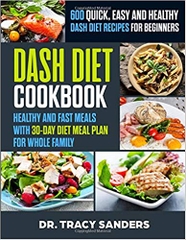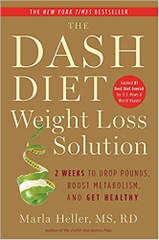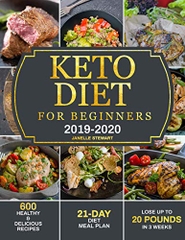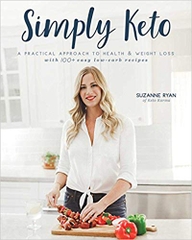-
-
-
Tổng tiền thanh toán:
-
-
Thông tin
-
Tìm sách theo yêu cầu
Book Description
Publication Date: February 22, 2013
It is an undeniable pleasure for the modern individual to look at the work accomplished by his or her own hands with a sense of pride and ownership. While humans will no longer generally starve to death if we don't preserve food at home (as we once would have done) we still enjoy the self-reliance that doing so brings.
A Beginners Guide to Home Canning & Food Preserving is for anyone wanting to learn the art of Home Canning. The book cover such topics as:
If you are an old hand at food preserving and canning you may even find a new recipe included in book.
Although the canning process is the most labor intensive procedure, all methods promote a sense of pride, accomplishment, and self-reliance. There's nothing like opening the pantry or freezer door on a frigid winter's day, where the snow - already up to the window sills - is coming down so hard you can't see your mailbox, and finding row upon row of neatly labeled produce and meats and remembering once again that if the world ended outside your door, your family would still eat well.
- Link: http://www.amazon.com/Beginners-Guide-Home-Canning-Preserving-ebook/dp/B00BJXY940
A Beginners Guide to Home Canning & Food Preserving is for anyone wanting to learn the art of Home Canning. The book cover such topics as:
- History of Food Preservation
- Definitions of Various Food Preservation Methods
- Food Safety and Safety Precautions
- Sourcing Tools, Equipment and Food
- Altitude Adjustments
- Water Bath Canning Details & Pressure Canning Details
- Recipes Including Jams, Jellies, Butters, Chutneys, Relishes, Pickles and Meat Fish and Poultry
If you are an old hand at food preserving and canning you may even find a new recipe included in book.
Although the canning process is the most labor intensive procedure, all methods promote a sense of pride, accomplishment, and self-reliance. There's nothing like opening the pantry or freezer door on a frigid winter's day, where the snow - already up to the window sills - is coming down so hard you can't see your mailbox, and finding row upon row of neatly labeled produce and meats and remembering once again that if the world ended outside your door, your family would still eat well.
Product Details
File Size: 4652 KB
- Print Length: 104 pages
- Sold by: Amazon Digital Services, Inc.
- Language: English
- ASIN: B00BJXY940
- Text-to-Speech: Enabled

- X-Ray:Enabled

- Lending: Not Enabled
- Amazon Best Sellers Rank: #325,831 Paid in Kindle Store (See Top 100 Paid in Kindle Store)
Most Helpful Customer Reviews
35 of 40 people found the following review helpful
3.0 out of 5 stars Significant Errors, To Be Taken With A Large Helping of Salt February 25, 2013
Format:Kindle Edition|Verified Purchase
There must be something about February that out of the blue Grandma is seeing a veritable flood of books that are, at least partially, about home canning. Odd for a month in which there is nothing to be canned, at least here in Vermont where it is too early for Maple and not quite late enough for rhubarb, but there it is. One has been right on the money, most far from the mark. A Beginners Guide to Home Canning & Food Preserving: Recipes, Jams, Marmalades, Jellies, Chutneys, Relishes Plus More... (Simple Living) falls somewhere in the middle.
The International Gold Standard for information about home canning and food preservation is that put out by the United States Department of Agriculture, various state agriculture agencies and associated Cooperative Extension Services. These are the folks whose primary mission is developing standards, procedures, recipes and educational programs to ensure a maximum of safety - the folks who write the Home Canning & Preserving "Bible" so to speak. It is these standards that I use when I am evaluating something like A Beginners Guide to Home Canning & Food Preserving: Recipes, Jams, Marmalades, Jellies, Chutneys, Relishes Plus More... (Simple Living). You can access them for yourself by way of the USDA's "Complete Guide to Home Canning", available online.
Author Mel Jeffries has done a good job of defining various preservation methods and talking about food safety as well as describing the canning process. However, much of her information on methods of sealing as well as timing is incorrect.
Grandma first became alarmed when she read
"Pour the hot liquid into hot, sterile jars, leaving ½ inch [1cm] headspace. Cover the jelly with melted paraffin or sterile jar lids fastened with rings/ bands. Store it in a dry, cool, dark place."
Jeffreys, Mel (2013-02-22). A Beginners Guide to Home Canning & Food Preserving: Recipes, Jams, Marmalades, Jellies, Chutneys, Relishes Plus More... (Simple Living) (Kindle Locations 479-481). . Kindle Edition.
When Grandma was a girl and first putting up preserves it was quite common to cover jams and jellies with paraffin wax without further processing. If a bit of mold formed one simply scraped it off and discarded that bit of the jam and used the rest. However, in the more-than-half-century that has passed since then we have learned that this mold is not always as harmless as once believed and that the remaining preserves can contain harmful mycotoxins. The USDA has specifically not recommended the use of paraffin as a means of sealing jams and jellies for several decades and certainly more than a sterile jar lid is required.
Further, Jeffreys instructs the home canner to process all other jam-like fruit products - marmalades, jam, conserves, fruit butters, and so forth for 15 minutes in a water bath canner. The current USDA recommendation for these products is 5 minutes at altitudes of 1000 feet or less above sea level, not 15. Overprocessing your jams & preserves can lead to a breakdown in the jelling and destroy the color.
Grandma also found the exceedingly strange - not to mention wrong - notation that "Pectin must be added to strawberries to obtain the correct thickness." There is absolutely no need to add commercial pectin to strawberries in order to produce jam. In fact, Grandma has moved away from using commercial pectin at all as she has found that though the names remain the same, the product has not. After several batches of expensive jellies and jams, including some rare Wild Grape, unjelled after a week or so in the jar, Grandma went back to the old-fashioned way of producing jam.
Grandma also found some incorrect information in the Vegetables section. While Jeffreys is correct that all vegetables other than tomatoes (actually a fruit) require processing in a pressure canner, the recipes that she gives for Sweet Corn Salad, Garden Vegetable Medley, and Mixed Vegetables, Italian Style, are considered vegetable pickles/relishes. Due to the high acidification with vinegar, these do not require pressure canning. The USDA recommendation is for processing in a water bath canner for times ranging from 5 to 15 minutes depending on the product. Processing in a pressure canner at the lengthy times specified by Jeffreys could result in a drastically overcooked product.
Also note that Jeffreys states "Wine vinegar has the best flavor, but less expensive cider, malt, or distilled vinegars can also be used as long as it has at least 5 per cent acid." Virtually all pickling recipes call for either distilled white vinegar or cider vinegar in the US while malt vinegar is common in the UK. In fact, Grandma has never seen a recipe specifying "white wine vinegar" for canning purposes, for a couple of reasons. A good wine vinegar is quite expensive, particularly in the quantities used in a pickling operation. Further, distilled white and cider vinegars are sold at a standard dilution of 5%. Specialty vinegars often are not and may contain other additives. None of these recipes require white wine vinegar.
Grandma's $0.02 - Canning can be a wonderful way to stretch your food budget and save produce windfalls and bumper crops for later. It can also be expensive and, done incorrectly, dangerous. While some of the recipes in A Beginners Guide to Home Canning & Food Preserving: Recipes, Jams, Marmalades, Jellies, Chutneys, Relishes Plus More... (Simple Living) look good as is some of the advice, the timing given by Jeffrey's is far from the USDA gold standard almost everywhere Grandma looks. Grandma recommends that you download a free copy of the USDA's "Guide to Home Canning" from the National Center for Home Food Preservation and double check all timing and processing recommendations against that.
The International Gold Standard for information about home canning and food preservation is that put out by the United States Department of Agriculture, various state agriculture agencies and associated Cooperative Extension Services. These are the folks whose primary mission is developing standards, procedures, recipes and educational programs to ensure a maximum of safety - the folks who write the Home Canning & Preserving "Bible" so to speak. It is these standards that I use when I am evaluating something like A Beginners Guide to Home Canning & Food Preserving: Recipes, Jams, Marmalades, Jellies, Chutneys, Relishes Plus More... (Simple Living). You can access them for yourself by way of the USDA's "Complete Guide to Home Canning", available online.
Author Mel Jeffries has done a good job of defining various preservation methods and talking about food safety as well as describing the canning process. However, much of her information on methods of sealing as well as timing is incorrect.
Grandma first became alarmed when she read
"Pour the hot liquid into hot, sterile jars, leaving ½ inch [1cm] headspace. Cover the jelly with melted paraffin or sterile jar lids fastened with rings/ bands. Store it in a dry, cool, dark place."
Jeffreys, Mel (2013-02-22). A Beginners Guide to Home Canning & Food Preserving: Recipes, Jams, Marmalades, Jellies, Chutneys, Relishes Plus More... (Simple Living) (Kindle Locations 479-481). . Kindle Edition.
When Grandma was a girl and first putting up preserves it was quite common to cover jams and jellies with paraffin wax without further processing. If a bit of mold formed one simply scraped it off and discarded that bit of the jam and used the rest. However, in the more-than-half-century that has passed since then we have learned that this mold is not always as harmless as once believed and that the remaining preserves can contain harmful mycotoxins. The USDA has specifically not recommended the use of paraffin as a means of sealing jams and jellies for several decades and certainly more than a sterile jar lid is required.
Further, Jeffreys instructs the home canner to process all other jam-like fruit products - marmalades, jam, conserves, fruit butters, and so forth for 15 minutes in a water bath canner. The current USDA recommendation for these products is 5 minutes at altitudes of 1000 feet or less above sea level, not 15. Overprocessing your jams & preserves can lead to a breakdown in the jelling and destroy the color.
Grandma also found the exceedingly strange - not to mention wrong - notation that "Pectin must be added to strawberries to obtain the correct thickness." There is absolutely no need to add commercial pectin to strawberries in order to produce jam. In fact, Grandma has moved away from using commercial pectin at all as she has found that though the names remain the same, the product has not. After several batches of expensive jellies and jams, including some rare Wild Grape, unjelled after a week or so in the jar, Grandma went back to the old-fashioned way of producing jam.
Grandma also found some incorrect information in the Vegetables section. While Jeffreys is correct that all vegetables other than tomatoes (actually a fruit) require processing in a pressure canner, the recipes that she gives for Sweet Corn Salad, Garden Vegetable Medley, and Mixed Vegetables, Italian Style, are considered vegetable pickles/relishes. Due to the high acidification with vinegar, these do not require pressure canning. The USDA recommendation is for processing in a water bath canner for times ranging from 5 to 15 minutes depending on the product. Processing in a pressure canner at the lengthy times specified by Jeffreys could result in a drastically overcooked product.
Also note that Jeffreys states "Wine vinegar has the best flavor, but less expensive cider, malt, or distilled vinegars can also be used as long as it has at least 5 per cent acid." Virtually all pickling recipes call for either distilled white vinegar or cider vinegar in the US while malt vinegar is common in the UK. In fact, Grandma has never seen a recipe specifying "white wine vinegar" for canning purposes, for a couple of reasons. A good wine vinegar is quite expensive, particularly in the quantities used in a pickling operation. Further, distilled white and cider vinegars are sold at a standard dilution of 5%. Specialty vinegars often are not and may contain other additives. None of these recipes require white wine vinegar.
Grandma's $0.02 - Canning can be a wonderful way to stretch your food budget and save produce windfalls and bumper crops for later. It can also be expensive and, done incorrectly, dangerous. While some of the recipes in A Beginners Guide to Home Canning & Food Preserving: Recipes, Jams, Marmalades, Jellies, Chutneys, Relishes Plus More... (Simple Living) look good as is some of the advice, the timing given by Jeffrey's is far from the USDA gold standard almost everywhere Grandma looks. Grandma recommends that you download a free copy of the USDA's "Guide to Home Canning" from the National Center for Home Food Preservation and double check all timing and processing recommendations against that.
XEM CHI TIẾT TẠI AMAZON.COM
- Thông tin chi tiết
- Mục lục
- Đánh giá & bình luận của người mua
- Những cuốn sách cùng chủ đề hoặc có liên quan
Tại web chỉ có một phần nhỏ các đầu sách đang có nên nếu cần tìm sách gì các bạn có thể liên hệ trực tiếp với Thư viện qua Mail, Zalo, Fanpage nhé
Đăng ký nhận tin qua email
Hãy đăng ký ngay hôm nay để nhận được những tin tức cập nhật mới nhất về sản phẩm và các chương trình giảm giá, khuyến mại của chúng tôi.












